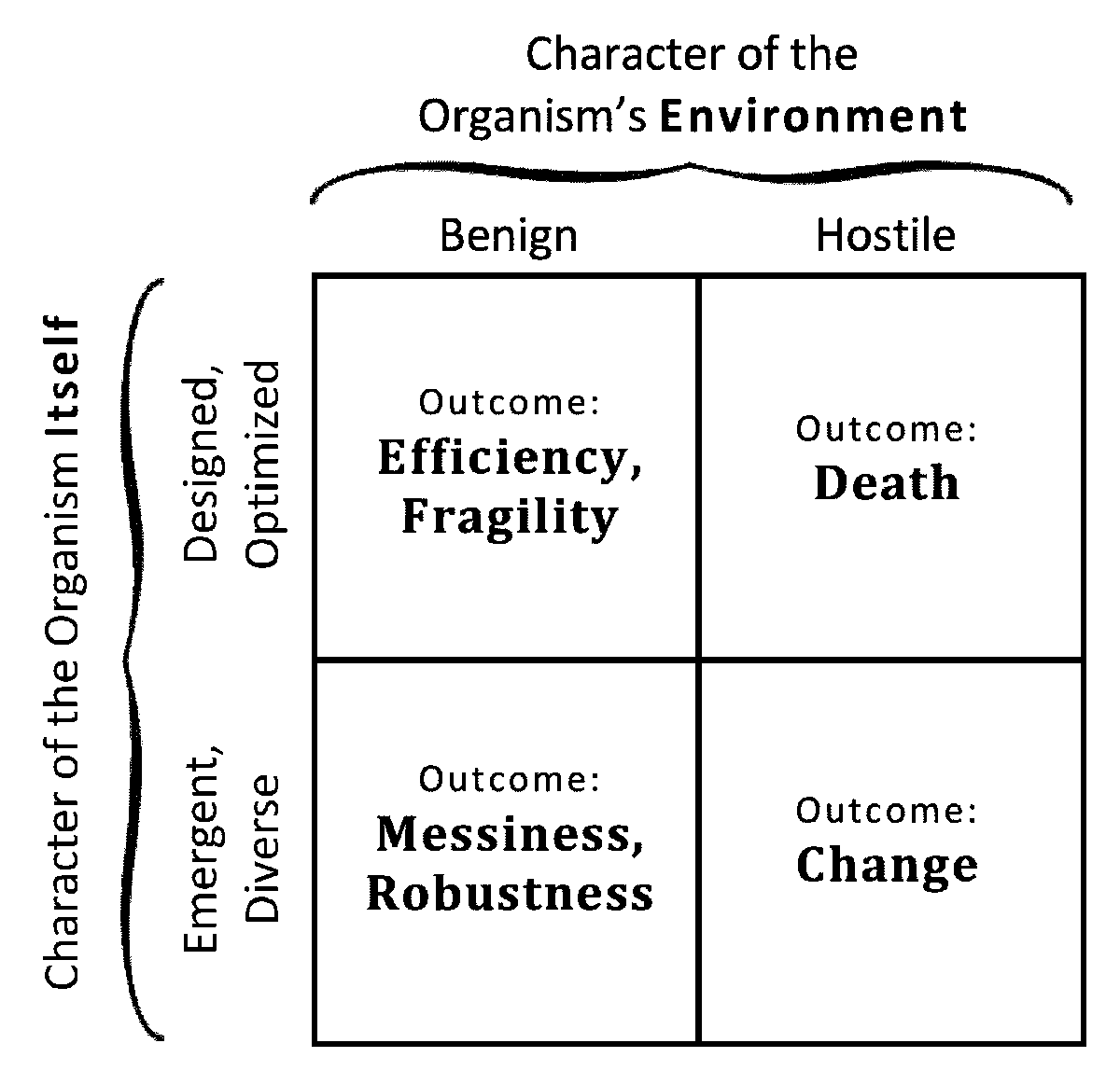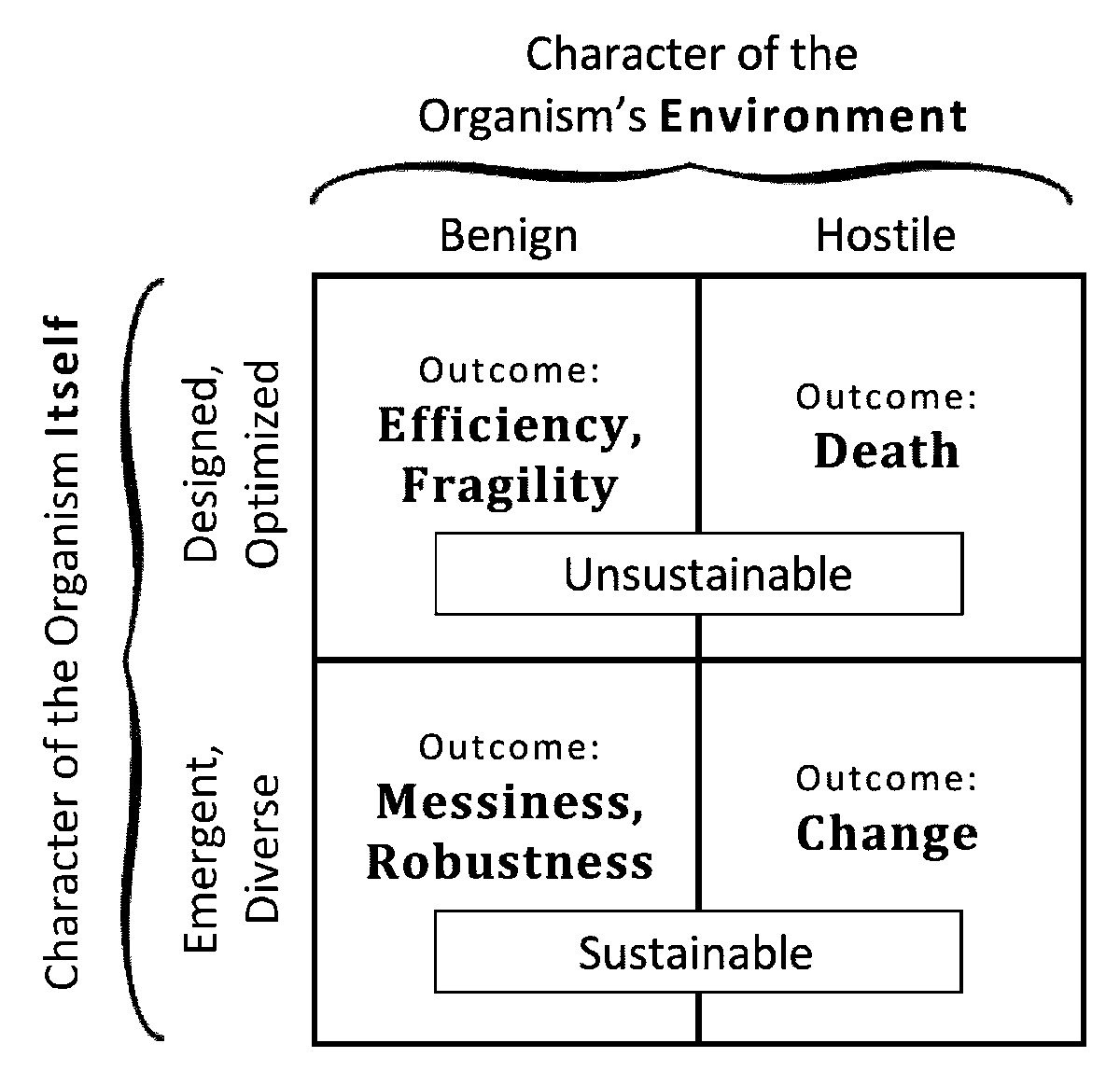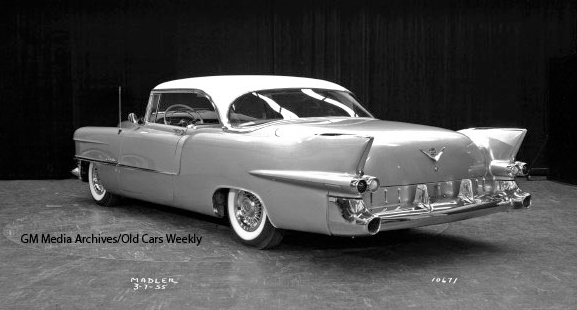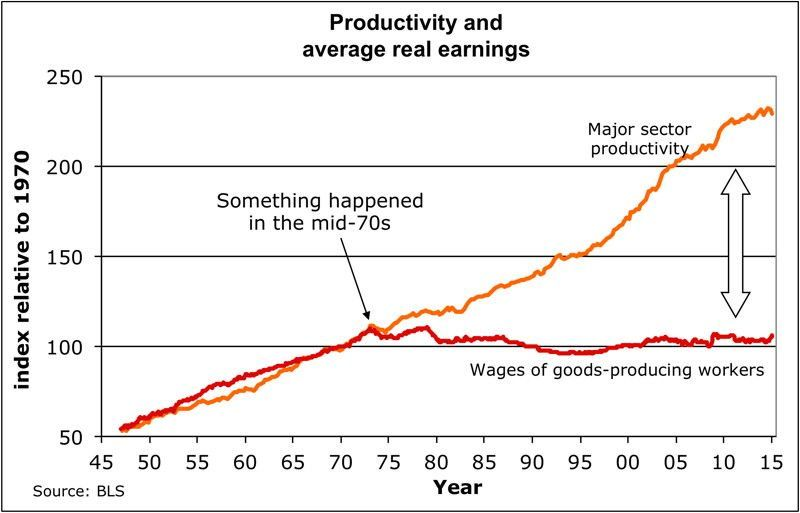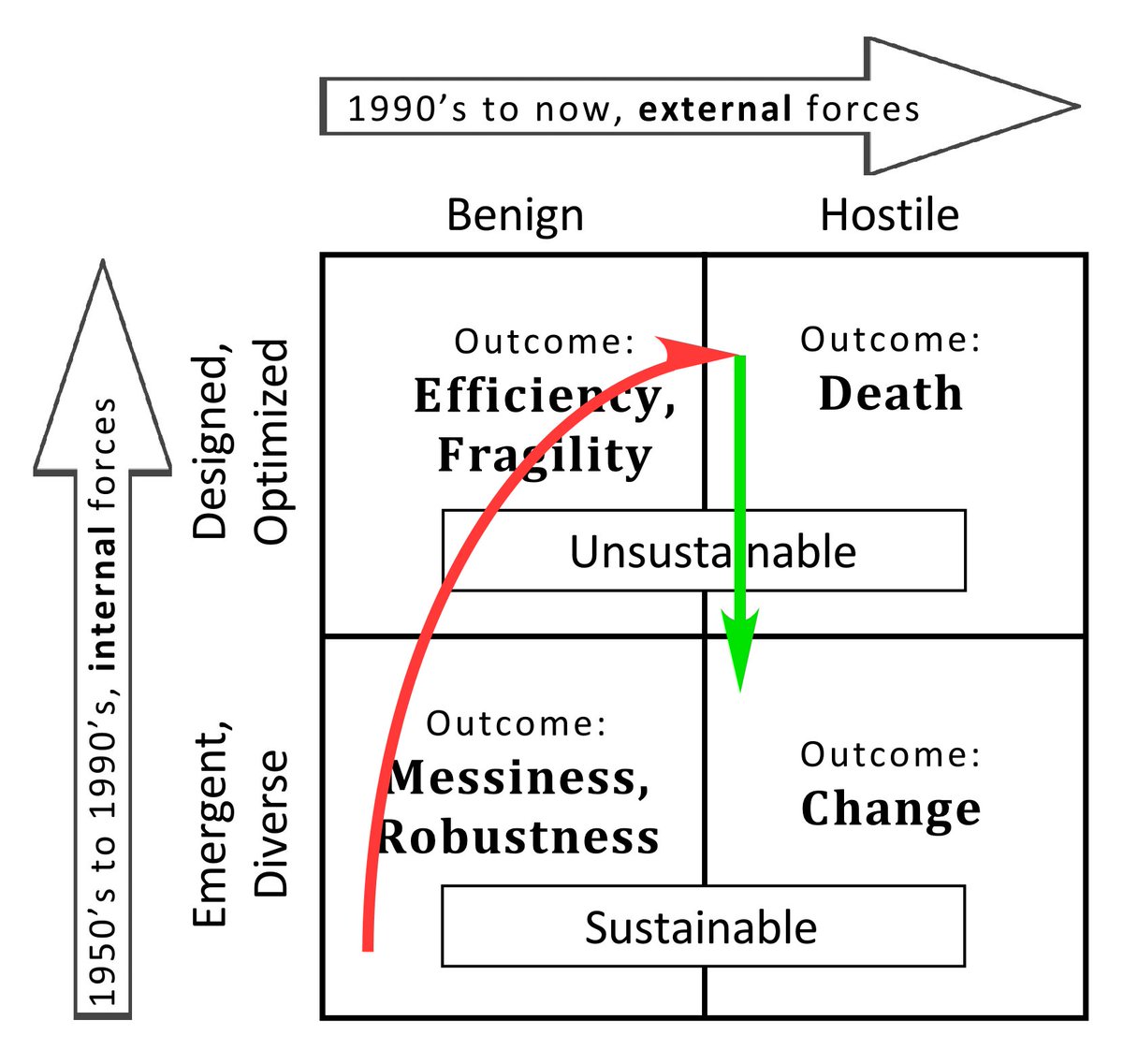MEMO
TO:My peers in journalism and the social sciences
(e.g., @anelsona @sarahkendzior @carolecadwalla @adamgopnik @craigunger @TimothyDSnyder @RBReich @profcarroll)
FROM:Someone who earned advanced degrees in physics and mathematics 60 years ago but has learned a lot since
1/55
TO:My peers in journalism and the social sciences
(e.g., @anelsona @sarahkendzior @carolecadwalla @adamgopnik @craigunger @TimothyDSnyder @RBReich @profcarroll)
FROM:Someone who earned advanced degrees in physics and mathematics 60 years ago but has learned a lot since
1/55
SUBJECT: If we want to save Western Liberal Thought we need to find a way to synthesize our two separate world-views into something new, and work creatively together, SOON
2/55
2/55
Cc: @PezeshkiCharles @JonHaidt @jaketapper @NoraBateson @MalcolmNance @Billbrowder @mfeathers @swardley @antlerboy @ruthmalan @ldebett @McFaul @gilsteil2 @sjkeyser
3/55
3/55
What is this? Taken on its face, this is a view from 50,000 feet, through the lens of systems thinking, of the 3/4 century of American history since World War 2.
4/55
4/55
(It’s also one part of a larger argument about social science that I’m assembling elsewhere on Twitter, e.g.,
https://twitter.com/conways_law/status/1208468897176924163)
5/55
https://twitter.com/conways_law/status/1208468897176924163)
5/55
The enemies of Western Liberal Thought are using tactics to disassemble our societies that we don’t know how to counter.
6/55
6/55
Journalist-scholars such as @anelsona, @craigunger, and @sarahkendzior have described in detail how this has been happening, but I see very few plausible intervention proposals. This is no accident; it’s complicated, and it doesn’t lend itself to arm-waving.
7/55
7/55
My underlying belief is that solutions are possible, but our Two Cultures will have to come together and work toward common models of our society.
https://en.wikipedia.org/wiki/The_Two_Cultures
8/55
https://en.wikipedia.org/wiki/The_Two_Cultures
8/55
These models will not necessarily be easy to find. And, as I have argued elsewhere, to be effective they will have to be tested against data, not just statistically but also in simulations, within a scientific framework.
https://twitter.com/conways_law/status/1208468897176924163
9/55
https://twitter.com/conways_law/status/1208468897176924163
9/55
The following essay is offered as a step toward such a collaboration.
10/55
10/55
Even before the Soviet Union imploded in 1991 it was exploding criminality into the West, like a plant exploding seeds. That International Criminality has taken root and is threatening American politics.
11/55
11/55
When @sarahkendzior was asked at an event for her book “Hiding in Plain Sight” whether Donald Trump will win the 2020 election, she said, “I fear that Trump will be reinstalled in 2020”. The implied threat was clear.
https://twitter.com/sarahkendzior/status/1248624679327125505 (at 51:05)
12/55
https://twitter.com/sarahkendzior/status/1248624679327125505 (at 51:05)
12/55
One thing I’ve noticed in all the scholarship I’ve read about the effect of International Criminality on American politics is that the journalists are careful to stay in their journalism lane. This is admirable, from an academic point of view.
13/55
13/55
From a patriotic point of view, however, it’s a dangerous missed opportunity.
From a systems point of view, this missed opportunity is an example of academic stovepiping.
https://www.worldpoliticsreview.com/articles/8518/academic-stovepipes-undermine-u-s-security
14/55
From a systems point of view, this missed opportunity is an example of academic stovepiping.
https://www.worldpoliticsreview.com/articles/8518/academic-stovepipes-undermine-u-s-security
14/55
Stovepiping might be a service to the academy when a researcher stays in his or her lane, but in this case it is a greater disservice to society.
My purpose here is to pursue this opportunity to jump lanes in the greater service to society.
15/55
My purpose here is to pursue this opportunity to jump lanes in the greater service to society.
15/55
Our traditional decoupling of theory and action has become a service to clever adversaries because it blocks our transfer of knowledge from diagnosis to remediation.
We need to understand how this tradition is being exploited, and we need to find a way around it.
16/55
We need to understand how this tradition is being exploited, and we need to find a way around it.
16/55
Worldview stovepiping by discipline has always been a problem, but in today’s world it threatens to be fatal. It blinds our view of how International Criminality has crippled our body politic’s corrective processes envisioned by our Constitution’s Framers.
17/55
17/55
The Constitution contains the body politic’s immune system. When it works well it maintains stability. The Framers designed a system of corrective feedback loops involving government officials, elections, and voters informed by a free press.
18/55
18/55
By corrupting elements of this system and changing the dynamics of the feedback loops by taking advantage of the Internet, International Criminality has learned how to disable this immune system, leaving us puzzled and defenseless.
https://en.wikipedia.org/wiki/The_Great_Hack
19/55
https://en.wikipedia.org/wiki/The_Great_Hack
19/55
Can a new synthesis of the disciplines of the Humanities and the Sciences change anything?
Am I just hoping for some new “out-of-the-box” thinking? (Yes and more.)
Is this too much to ask? (Perhaps, but what if it’s necessary?)
20/55
Am I just hoping for some new “out-of-the-box” thinking? (Yes and more.)
Is this too much to ask? (Perhaps, but what if it’s necessary?)
20/55
Systems people and social-science people can see politics through two different lenses. Application of a systems perspective to an understanding of the American political system will better understand the control pathways of the system as it works today.
21/55
21/55
My purpose is not necessarily to manipulate the system, but to understand how our vulnerable pathways have been disrupted and to explore remedies.
22/55
22/55
This essay is informed by multiple lines of thought.
1. Christensen’s “disruptive innovation” strategy. I have already written about this in the context of education. It can suggest counterintuitive approaches to change.
https://twitter.com/conways_law/status/1243649153520922624
23/55
1. Christensen’s “disruptive innovation” strategy. I have already written about this in the context of education. It can suggest counterintuitive approaches to change.
https://twitter.com/conways_law/status/1243649153520922624
23/55
2. A model of system change that I’ll describe below. This can help to explain how we got to where we are, and will suggest how we need to change.
24/55
24/55
This model of system change is an abstraction of lessons I’ve seen in every discipline I’ve considered, from biology to warfare.
I’m presenting it as a 2x2 matrix (pronounced: “Two-by-two”).
http://2x2matrix.com/downloads/bcg.pdf
25/55
I’m presenting it as a 2x2 matrix (pronounced: “Two-by-two”).
http://2x2matrix.com/downloads/bcg.pdf
25/55
The model describes the effect on an “organism” (that can be just about anything) in terms of two binary properties:
1.The character of the organism itself.
2.The character of the organism’s environment.
26/55
1.The character of the organism itself.
2.The character of the organism’s environment.
26/55
It is, of course, an oversimplification as almost all models are, but in my view it is a useful tool for conferring insight.
Here is the 2x2.
27/55
Here is the 2x2.
27/55
Here’s an example. How can we get higher productivity from an agricultural crop? The typical engineering-optimization approach is to find a species that exhibits optimum productivity in a given environment.
28/55
28/55
In the left-hand column, the goal is to modify production to move from the bottom, unmanaged condition to the top, managed monoculture condition. We do this by a variety of means: hybridization and chemical application, for example. It’s been called the “green revolution”.
29/55
29/55
That works as long as the environment is benign. When it turns hostile, as it did for potatoes in the middle of the 19th century, for example, you move to the right-hand column.
https://en.wikipedia.org/wiki/Great_Famine_(Ireland)
30/55
https://en.wikipedia.org/wiki/Great_Famine_(Ireland)
30/55
The right-hand column presents the case for diversity in a population. It also can be used to explain how, in the 18th century, American rebels successfully used guerilla warfare against a British army that was optimized for conventional battle conditions.
31/55
31/55
History can be viewed in this frame. People and states are organisms, surrounded by other organisms that make up their environments. In the presence of scarcity competition for resources is a form of hostility in the sense of the model.
32/55
32/55
Therefore, in the presence of scarcity and competitors, designing for efficiency at the expense of diversity can lead to unsustainable outcomes. We see it all around us as a consequence of industrialization, in our climate, for example.
33/55
33/55
Seen from this perspective our problem is much larger than International Criminality.
In my view, this problem has been of our own making.
Below I’m going to use this model to reinterpret the common narrative about how our world has changed since WW2.
34/55
In my view, this problem has been of our own making.
Below I’m going to use this model to reinterpret the common narrative about how our world has changed since WW2.
34/55
It’s generally understood that one big reason for the outcome of World War 2 is that the United States massively outproduced its enemies. We instituted rationing and price controls, and took control of key industries. (Compare America’s response to the COVID-19 pandemic.)
35/55
35/55
When we emerged from the War our returning men and women created a giant demand for consumer goods, and we had a manufacturing establishment ready to meet this demand. I remember 1955 in particular for its explosion of flamboyant automobile designs.
36/55
36/55
After the War the United States found itself undamaged physically, with relative wealth and energy, and surrounded by a damaged world in need of help.
37/55
37/55
Because, in my view, of the sensitivity to the needs of the collective that had been developed during the Depression and War, and the memory of the mistakes of the Treaty of Versailles, America took a constructive path toward Europe and Japan.
38/55
38/55
Thus began a great period of reconstruction.
In some parts of the World.
39/55
In some parts of the World.
39/55
The intellectual work behind this reconstruction was informed by our success at applying the engineering-oriented approach to organization and production that had been so successful in the pursuit of the War. This especially informed thinking in economics.
40/55
40/55
This period created institutions such as the World Bank and the International Monetary Fund that are still influential.
https://www.aier.org/article/what-happened-at-bretton-woods/
41/55
https://www.aier.org/article/what-happened-at-bretton-woods/
41/55
Also, possibly as a reaction to years of enforced collective thinking, a strain of radical individualism emerged. This manifested in economics as “neoliberalism”, and for many of the rest of us as the “human potential” movement.
https://en.wikipedia.org/wiki/Human_Potential_Movement
42/55
https://en.wikipedia.org/wiki/Human_Potential_Movement
42/55
>>In my view we can trace the fragility of today’s politics directly to this development of radical individualism as well as other developments that I will discuss below.
43/55
43/55
(While researching this essay I was particularly helped by the Wikipedia article on the “Washington Consensus”. It helped me appreciate the complexity of the set of problems that many smart economists were wrestling with.
…
https://en.wikipedia.org/wiki/Washington_Consensus
44/55
…
https://en.wikipedia.org/wiki/Washington_Consensus
44/55
What I didn’t expect was the connection between a source of controversy among them and the lessons of the 2x2 model. The language used by economists for this development-policy disagreement was “One size fits all” vs. “Local development models”.)
45/55
45/55
Here is where I’m going with this. (This is of course an oversimplification, but so is almost all of social theory.)
46/55
46/55
In the last half of the 20th century we worked our way from the bottom to the top of the left-hand column of the 2x2. After the fall of the Soviet Union we find ourselves being pushed from the top-left to the top-right.
47/55
47/55
One of the lessons we carried away from the War was a fixation for efficiency. This carried into many fields and led to big changes, particularly around the decade after 1970.
https://twitter.com/conways_law/status/1175047108417789954
48/55
https://twitter.com/conways_law/status/1175047108417789954
48/55
Then we saw the success of the Apollo project and its microelectronic consequences for manufacturing (automation and robotics) and office work (computers), creation of a new industry (software), and conversion of the economy to one based on credit (the 1971 Nixon Shock).
49/55
49/55
One of the effects of this efficiency-driven and individualistic mentality was a shift of financial returns from labor to capital. This shows up dramatically in this chart based on one published by the Bureau of Labor Statistics.
50/55
50/55
Here is another reference to this slow, silent disruption.
https://www.epi.org/productivity-pay-gap/
51/55
https://www.epi.org/productivity-pay-gap/
51/55
PBS FRONTLINE’s “Left Behind America” focused on Dayton Ohio, whose hollowing-out began in the 1970s.
https://www.pbs.org/video/left-behind-america-tkmile/
The distress America is experiencing today began a half-century ago.
52/55
https://www.pbs.org/video/left-behind-america-tkmile/
The distress America is experiencing today began a half-century ago.
52/55
If we are going to understand the stresses on today’s America we have to have a theoretical model that moves us from World War 2 to now. That’s too important and too big a job for anything less than our entire intellectual engine.
53/55
53/55
Here is a graphical representation of this history framed in the 2x2. The red arrow shows where we have come since the end of the War. The green arrow shows what has to change for us to pull ourselves out of the soup.
54/55
54/55
The arrows don’t tell us what we have to do, but they do indicate the direction we have to move the system. Perhaps this is enough to start a conversation.
55/55
55/55
@threadreaderapp unroll please

 Read on Twitter
Read on Twitter